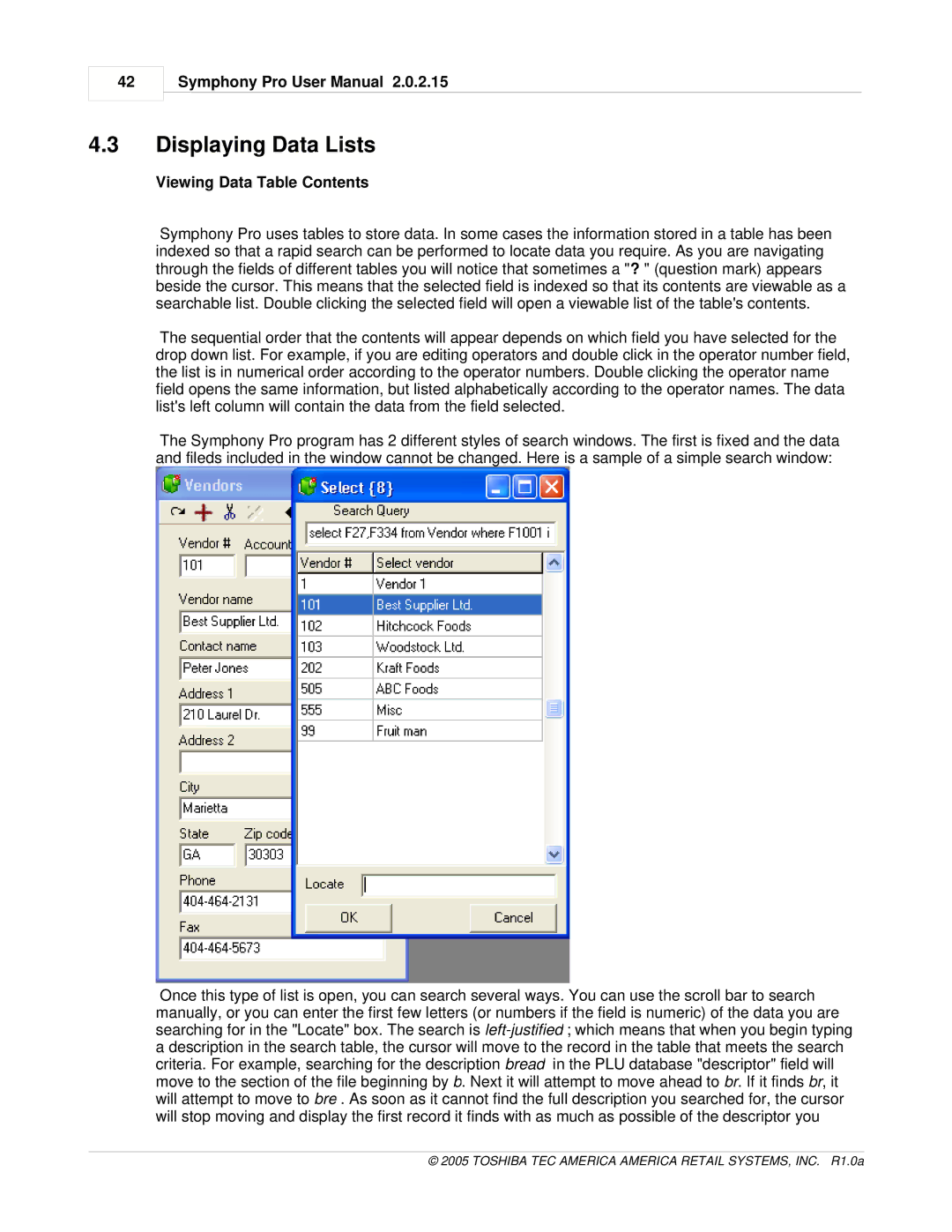
42
Symphony Pro User Manual 2.0.2.15
4.3Displaying Data Lists
Viewing Data Table Contents
Symphony Pro uses tables to store data. In some cases the information stored in a table has been indexed so that a rapid search can be performed to locate data you require. As you are navigating through the fields of different tables you will notice that sometimes a "? " (question mark) appears beside the cursor. This means that the selected field is indexed so that its contents are viewable as a searchable list. Double clicking the selected field will open a viewable list of the table's contents.
The sequential order that the contents will appear depends on which field you have selected for the drop down list. For example, if you are editing operators and double click in the operator number field, the list is in numerical order according to the operator numbers. Double clicking the operator name field opens the same information, but listed alphabetically according to the operator names. The data list's left column will contain the data from the field selected.
The Symphony Pro program has 2 different styles of search windows. The first is fixed and the data and fileds included in the window cannot be changed. Here is a sample of a simple search window:
Once this type of list is open, you can search several ways. You can use the scroll bar to search manually, or you can enter the first few letters (or numbers if the field is numeric) of the data you are searching for in the "Locate" box. The search is
